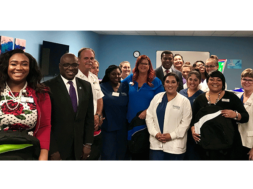
By Ruth Reynard Ph.D., Education Consultant
Introduction
The general concept of student-led or student-driven instructional design and delivery is not new. It is a more current idea but not a new one. We have been aware of the importance of instruction being designed to meet the individual learning needs of students and to include the various students learning preferences in order to be more successful and effective for some time. Additionally, educational theorists have discussed and promoted constructivist and social constructivist learning theories for some time now, as well as the importance of student engagement and hands on-experiential and applied learning as the most effective methods. I believe however, that as a result of new technology, global connectivity and the more recent development of user-controlled, customized and “published” digital environments of social exchange, there is a new and much more empowered focus on the individual than ever before and the importance of individual choice and preference.
As a result, student choice now does not only refer to objective selection, but also preference, intention and use.
This has direct implication for curriculum design, as well as academic and professional programming and accreditation. These are very real challenges for all institutions of higher learning and to every area of curriculum design, instructional delivery and the evaluation and accreditation of learning.
Preference
Student choice and preference conventionally refers to learning preferences or learning styles in the instructional process. That is the preferred style of learning. Currently, however, student preference or choice has expanded to include, program compilation, length and use. Increasingly, students are not settling for predetermined programs in length or in composition. The idea that content is subject-based has passed. Content now refers to what students are interested in and what they see as important to their own knowledge growth and their future. Rather than selecting one title or profession, students are more inclined to select current and future interests as well as desired skills. The advent of the internet, as well as the increased global networking and connectivity, have influenced changes in knowledge bases and expanded parameters and relevancy of knowledge in various subject areas.
Additionally, “voices” mostly unheard in the “published” world are now being published and connected and, ultimately, are changing the perception of what has been long accepted as relevant and necessary.
For example, during a recent visit I made to the Université Chrétienne Bilingue du Congo (UCBC) in Beni, DRCongo (http://www.ucbc.org/), I discovered extremely interesting new knowledge in various academic programs which are now influencing the accepted body of knowledge in trauma recovery, natural wellness, and sustainable agriculture. With current connectivity and virtual reality and simulation technologies, knowledge cannot only be shared, but developed and applied in ways and in combinations not even known before. This kind of development requires flexibility in instruction and design and increased speed in acknowledgement and use. In an April 2017 Harvard Gazette posting on the challenges currently facing higher education, it is stated that public and private universities are currently facing challenges in the areas of, “global excellence, expanding access and ensuring affordability.”
Intention
Harvard president, Drew Faust stated in a 2012 visit to India’s, University of Mumbai:
The “whole educated world” is also a far flatter world. Technology has altered forever the ways in which we gather information and communicate with one another, distances once spanned in days are now spanned in seconds. This unprecedented connectivity is complemented by global mobility, heralding a borderless age in which students can move more easily, faculty connect more readily, and ideas flow more freely.
Following this line of thinking, the intention of education has to change and continue to change. While we know that already, students here in the U.S. are increasingly focused on immediate and ongoing employment rather than delaying employment for education, the intention of education is increasingly becoming more about relevancy. That is, how do I know what I’m learning is actually relevant? Due to the increased culture of user choice in digital environments, student choice is putting increased pressure on colleges and universities by simply NOT choosing current degree options and pre-set professional training selections. Conventionally, students would select courses and programs and degrees based on what experts agreed were the best choices. Increasingly, students see those choices as their own to make, and they depend on the individual intention of the student to select what they perceive to be relevant and supportive of their own knowledge growth. This is difficult for “experts” to accept who have studied under the conventional systems of accredited selection. The following questions currently asked by those selecting higher education programs seem ridiculous to those of us who have been around a while and simply studied what we were told to study:
- Do I need this?
- Why do I need this?
- Is it important?
- Can I find another way or a better way to learn what I need?
Looking at these questions, however, in the context of global connectivity and relevancy, is vital and they should be asked and answered regularly. Not only are these questions necessary to student choice, but are vital for curriculum design and instructional delivery and cost. If we cannot immediately see the relevancy of the content in terms of actual knowledge growth and skill development, then the courses and programs should not exist. Additionally, the length of time required to develop the relevant knowledge and skills will inevitably decrease with the use of newer technology. We simply cannot and should not rationalize length based on old models.
Use
Required and relevant knowledge and skills are also “moving targets” in terms of their use.
Simply put, the skills one needed even two years ago in most professions or positions, are now likely inadequate or incomplete.
Therefore, again, rather than teaching specific skills or preset knowledge, the goal should be to encourage ongoing learning and growth. So rather than teaching students, educators should facilitate ongoing learning. While we have acknowledged this for some time, it is now becoming imperative as none of us know what will be relevant six months from now. Critical thinking must continuously pursue asking critical questions as well as finding critical solutions and problem-solving. Therefore, the “use” of education is increasingly about the processes of thinking and the growth of knowledge rather than the grasp of set information or facts.
In essence, students must engage in the active pursuit of knowledge and the ability to develop skills as needed and as a result of new knowledge. Theorists such as Bareiter and Scardamelia (2003, 2006) have, for some years, researched and explored the importance of acquiring new knowledge through the active engagement of learners in their own learning process. Their idea of ‘new knowledge’ being precisely about discovering what has never been known through the active learning process, is increasingly relevant. As an extension of social constructivist ideals of interaction and communities of learners, the idea of knowledge building is that it is “owned” by the participants rather than prescribed externally. While we have attempted to integrate some of these ideals into learning environments over the years, I suggest that now, this is how all learning environments must operate if the “use” of learning is to be targeted and the relevancy achieved by students. In short, if colleges and universities do not become increasingly about learning and knowledge rather than preset standards, they will cease to exist in the not too distant future.
New flexible designs and accreditation
I have written some articles over the years about flexible instructional design (Reynard, 2003, 2009, 2012) and the need for these designs are increasingly critical. Outcomes, around which curriculum and instruction are designed, must be wide in scope and relevant in use and application. Additionally, the evaluation of instruction as well as the assessment of knowledge must include the learning process, methods to achieve and new knowledge gained, if these are to remain authentic and reflective of true learning. The implications for holistic rather than standardized testing are obvious as are the challenges to accreditation which often remains inflexible and takes much too long to achieve. Accreditation must be more about the relevancy and use of programs than the preset standards of times and places past. In short, evaluation, assessment and accreditation must be driven by learning and knowledge rather than being what drives the process and presets the parameters.
Summary
I am confident that most higher education professionals know only too well already that goals are changing and the challenges for change and flexibility are increasing. We also know that current practices and parameters are insufficient and ineffective in the light of current student choices and preferences. My sense is that we must lead by example and become not only focused, but obsessed with learning and the gaining of new knowledge. Standardized processes will never meet the interests and the needs of current and future students. We must develop instructional designs that move and grow with the moving targets of current technology and global interconnectedness and relevancy. We must return to the essence of learning which is discovery and the central and critical focus on student choice in the learning process.
References
Scardamalia, M. & Bereiter, C. (2006). Knowledge Building: Theory, pedagogy, and technology. In K. Sawyer (Ed.), Cambridge Handbook of the Learning Sciences (pp. 7M118). New York: Cambridge University Press.
Scardamalia, M. (2003). Knowledge Society Network (KSN): Toward an expert society for democratizing knowledge. Journal of Distance Education, 17 (Suppl.3, Learning Technology Innovation in Canada) 63M66.
2012, Faust speech: Challenges of Higher Education
2017, Harvard Gazette discussion: The Challenges Facing Higher Education.
Reynard, Ruth (2009). Designing Learning Spaces for Instruction, Not Control. Campus Technology.
“Internet-Based ESL for Distance Adult Students – A Framework for Dynamic Language Learning.” Canadian Modern Language Review. University of Toronto Press. Toronto, Canada. Vol. 60, No. 2, December 2003.
Reynard, Ruth (2012). Understanding Mobility and Its Impact on Learning. Campus Technology.
DR. REYNARD has over 20 years’ experience in adult, community, and higher education in the U.S. and Canada. She has worked extensively with program managers, faculty, and departmental administrators to design instructional programs in various academic and vocational program areas and deliveries. In addition, she has developed customized English Language programs in N. America, China and the Middle East. These programs were enriched by her personal and educational exposure to language and culture in N. America, Europe, China, and Africa. Ruth holds a Ph.D. from the Ontario Institute for Studies in Education, University of Toronto (OISE/UT). Her graduate work focused on diversity awareness, inclusive curriculum planning, instructional design, distance learning, and Internet-mediated learning environments. Dr. Reynard has regularly contributed to online publications such as Campus Technology and T.H.E. Journal and currently edits a teaching journal for career faculty published by Pearson Publishers.
Contact Information: Ruth Reynard, Ph.D. // Education Consultant // 224-520-4109 // ruthreynard@gmail.com // www.drruthreynard.com











